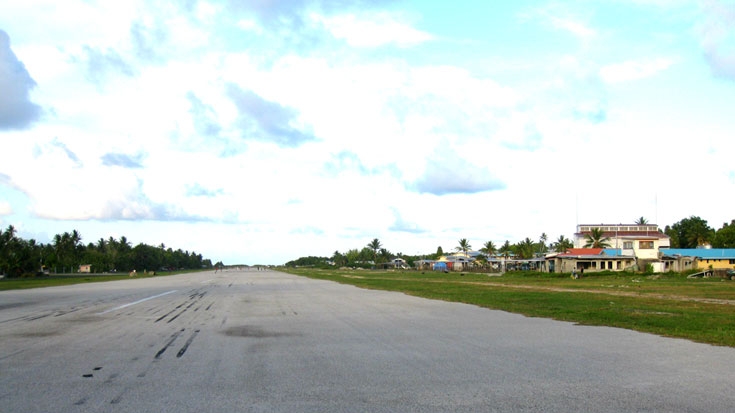Overview
By improving aviation infrastructure, management and operations, the Pacific Aviation Investment Program will help make air travel to and from the Pacific Islands safer and more efficient. Greater flight access and improved travel conditions will promote tourism and trade, also opening access to jobs, markets and services overseas. It will boost regional integration through shared technology, systems and an effective air transport network.
Challenges
Pacific Island countries like Kiribati and Tuvalu are among the most remote in the world, with small populations dispersed across several islands, and vast expanses of ocean. Safe and efficient air travel is critical to connect them to each other and larger markets, including Australia, the United States and New Zealand, and to support tourism. In the Pacific Island countries, tourism contributes on average twenty percent of GDP and a large share of employment.
In the Pacific Island countries, many airports are in poor condition. Runways have deteriorated, and essential airport infrastructure such as navigation aids and fire safety equipment need to be urgently upgraded. Improvements are needed to ensure air travel in the region meets minimum international safety requirements.
Approach
Designed to improve safety and oversight, the Program will focus on four major activities:
- Investments in key airport infrastructure will focus on runways, navigation aids, lighting and improvements to airport terminals and security. Such activities will help airports meet International Civil Aviation Organization (ICAO) standards for safety and security; this will make it easier for flight companies to operate in the region, make air travel safer and facilitate tourism and other benefits for people in Pacific Island countries. At the regional level, the program will strengthen navigation and communications.
- Supported by the Government of Australia through the Pacific Region Infrastructure Facility, the Program will introduce a number of critical reforms in the aviation sector to improve safety: for example, developing technical regulations and manuals, and supporting policy for airport security, air traffic management and financing.
- The third aspect of the program, again supported by the Government of Australia, will assist countries in managing and operating airports.
- Finally, given local capacity constraints, project support will be given to a number of parties involved in implementing the project, including the Civil Aviation Authorities of the various countries.
Locations
Kiribati, Tonga and Tuvalu in the first phase. (click for larger image)
Bank Contribution
The International Development Association will contribute up to US$125 million.
Partners
The Governments of Tonga, Kiribati, Tuvalu will contribute US$19.09 million. The Government of Australia will support with US$3.19 million through the Pacific Region Infrastructure Facility.
Toward the Future
The Program was first approved in December 2011 and will end in December 2016. It will be implemented in four phases over a five to ten year period, firstly covering Kiribati, Tonga and Tuvalu.
A further US$ 63 million could be available to other eligible countries (Samoa, Vanuatu and Solomon Islands) in future phases.
Eligibility criteria include implementing a basic safety and security oversight program, and introducing a minimum AU$ 5 international departure “safety levy” dedicated to funding safety-related activities.

